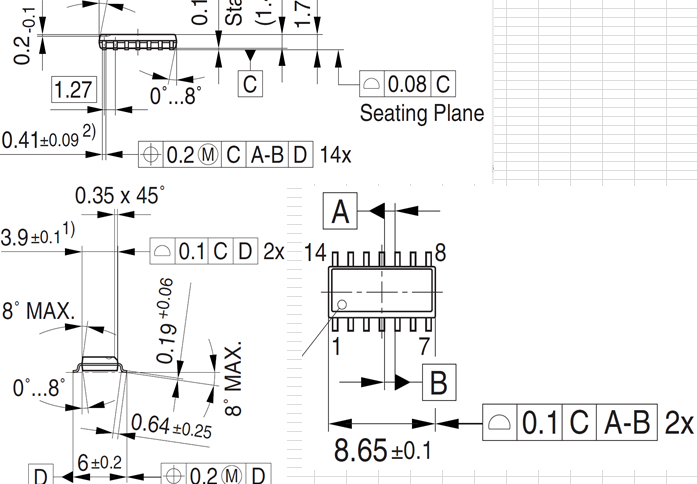jmccann
Electrical
- Sep 18, 2015
- 7
I'm a lowly measurement technician. They sent me to GD&T training, but it was mostly about theory and applying the principles when drafting up a design drawing. None that helps much when trying to actually measure things using GD&T. There's no one around for me to ask for help, so I'm coming to this forum.
This is a microprocessor drawing with lots of GD&T on it. The questions I have are about the two positional ones. My problem is, the only way I know to do position is an x y coordinate deal with maybe the Pythagorean equation. In this image, I don't have but the one basic dimension in the whole drawing. I'm at a loss as to how they expect this positional measurement to get done. Am I just measuring the distance between a pin middle and the adjacent one, and then taking the absolute difference from the basic dimension? If that were the case, I could only measure 13 instances and not 14 like it asks.
I have a suspicion that GD&T was just plain used incorrectly on this drawing.
Thanks to those that help

This is a microprocessor drawing with lots of GD&T on it. The questions I have are about the two positional ones. My problem is, the only way I know to do position is an x y coordinate deal with maybe the Pythagorean equation. In this image, I don't have but the one basic dimension in the whole drawing. I'm at a loss as to how they expect this positional measurement to get done. Am I just measuring the distance between a pin middle and the adjacent one, and then taking the absolute difference from the basic dimension? If that were the case, I could only measure 13 instances and not 14 like it asks.
I have a suspicion that GD&T was just plain used incorrectly on this drawing.
Thanks to those that help

